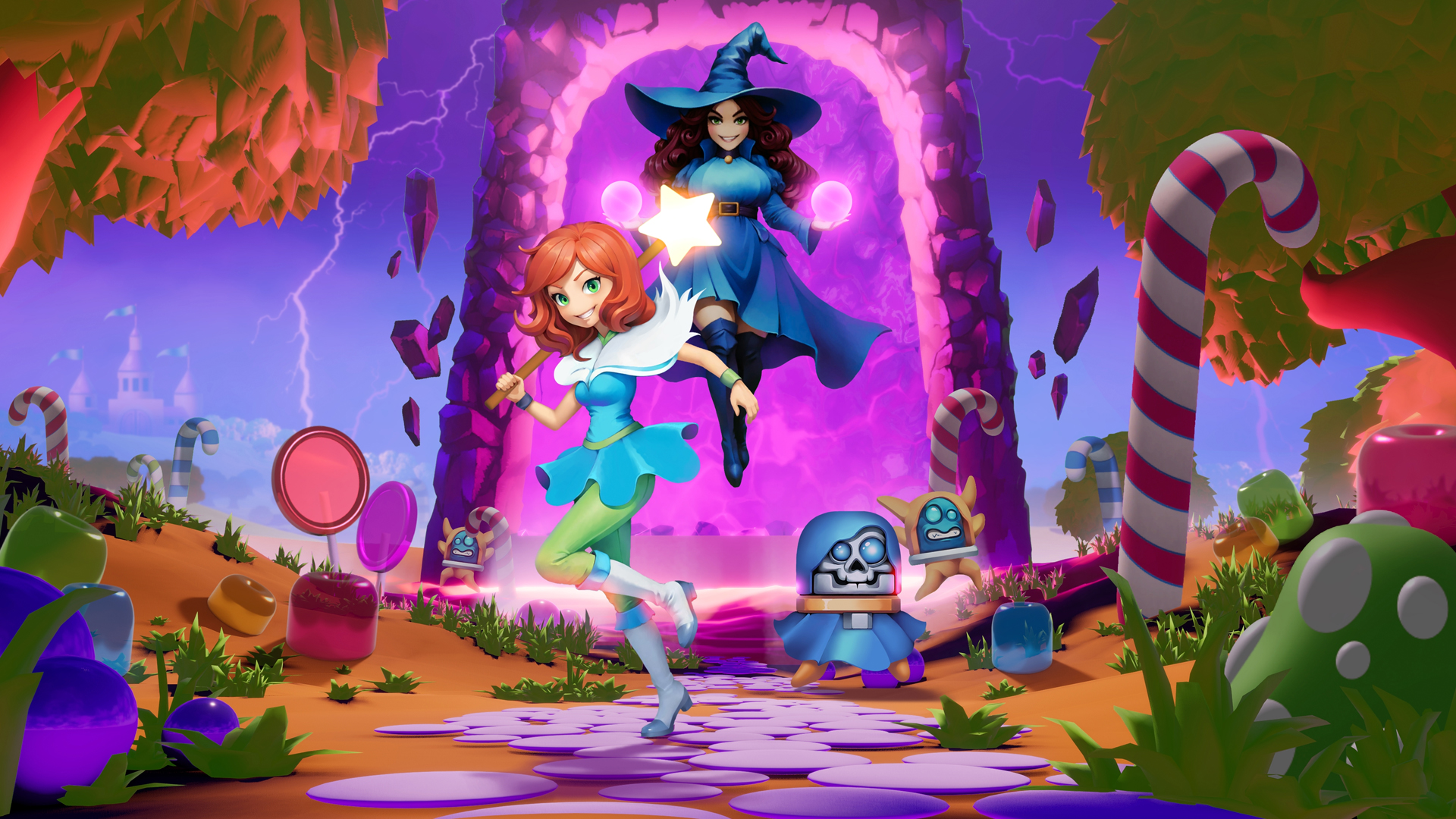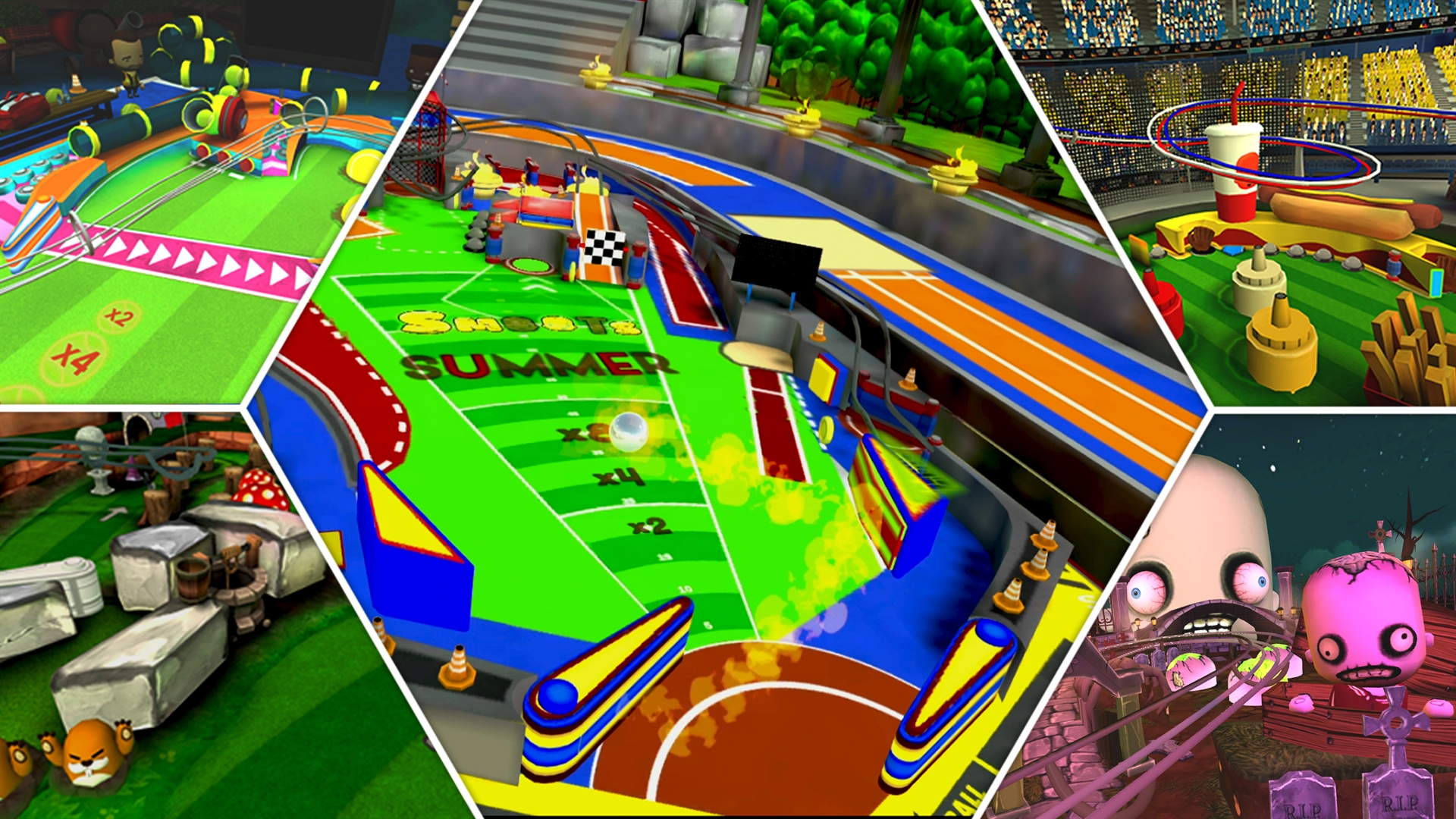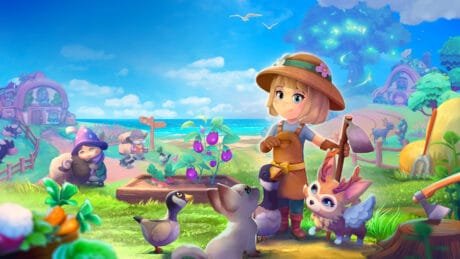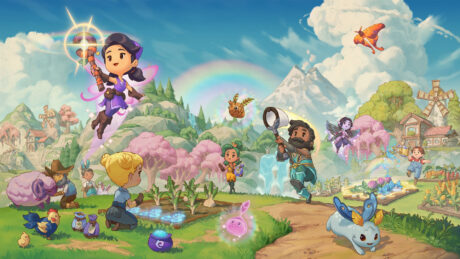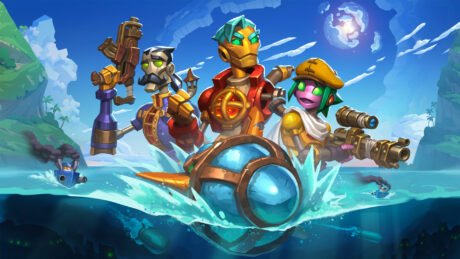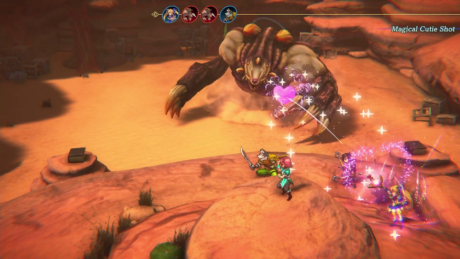Purrr....
- A solid, classic RPG
- Characters (a ton)
- Variety of things to do
- Soundtrack
- 2.5D style
- Voice acting
Hisss!
- Battle camera movement needs be to less dramatic
- Fast-forwarding battle animations missing
- Some mini games become unnecessary chores
Platform
Switch, PlayStation 5, PlayStation 4, Xbox Series X, Xbox One, PCPublisher
505 GamesDeveloper
Rabbit & Bear StudiosGenre
Action, Adventure, RPGPlayers
1File Size (Minimum)
27.8 GBRelease Date (NA)
Apr 23, 2024Filed Under
Eiyuden Chronicle: Hundred Heroes is exactly what you expect from a team that once worked on the classic role-playing game (RPG) series, Suikoden. Playing Hundred Heroes the first time feels like being reunited with a long-lost friend. From its gameplay to its soundtrack and everything in between, it’s a solid game for RPG fans. A PlayStation 5 review code provided for this review and gameplay footage.
Veterans Returned
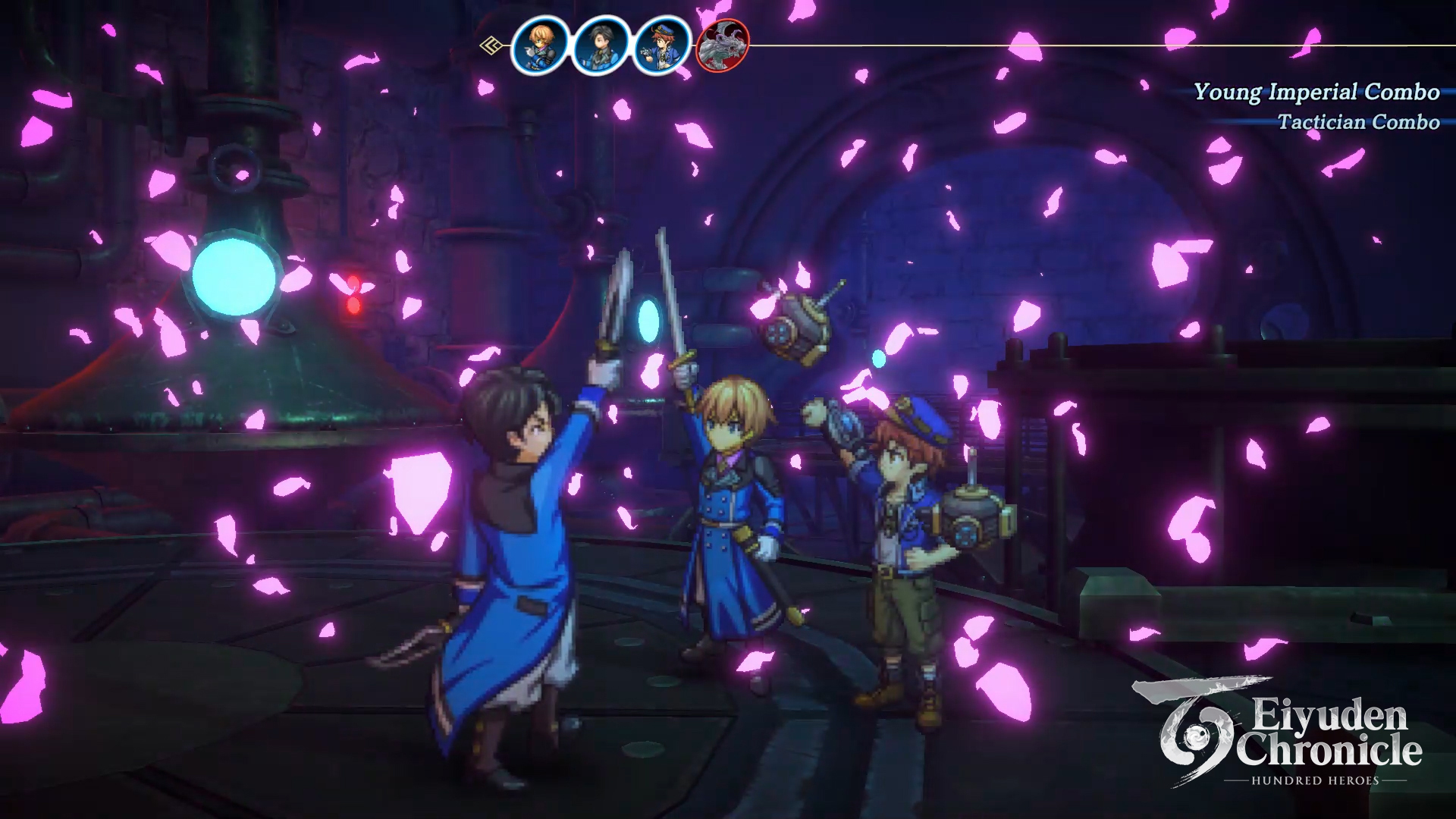
Launched as a Kickstarter project in 2020, Eiyuden Chronicle: Hundred Heroes was successfully funded within four hours and its campaign ended with $4.5 million contributed from over 46,300 backers. The game was set to release in 2021 but was delayed a couple times before its final release in April 2024.
The indie RPG brought in veteran talents, mostly from Konami (Metal Gear Solid, Castlevania), who formed their own studio called Rabbit & Bear Studios. Yoshitaka Murayama, president, CEO and studio lead for the indie studio, is the creator of the popular RPG, Suikoden. Murayama left Konami in 2002 before the release of Suikoden III. In unfortunate news, Murayama passed away in early February 2024 before seeing his project released. As such, Hundred Heroes is Murayama’s last masterpiece.
Murayama had additional help from fellow colleagues at Konami. Junko Kawano, who took over the Suikoden series after Murayama’s departure, used her skills in Hundred Heroes’s character designs and illustrations. Art director and producer Junichi Murakami, known for his work as a director of Castlevania: Aria of Sorrow, also lent his talent to the indie studio. Osamu Komuta joined Murayamato for the first time after working on Suikoden Tierkreis, as the game director.
The game’s soundtrack is composed by Motoi Sakuraba and Michiko Naruke. Sakuraba worked on a variety of games since his start in 1989, including game series like Golden Sun, Mario Tennis, and Star Ocean. Naruke has worked in the video game music industry since 1990 and is best known for her work in the Wild Arms series of RPGs. She’s also done arrangements for the Super Smash Bros. series.
Hundred Heroes is backed by highly skilled people, and it shows from the moment one turns on the game. Even with the unfortunate loss of Murayama, Rabbit & Bear Studio has enough skill and knowledge to keep rolling after its launch of Hundred Heroes.
Heroes are Born
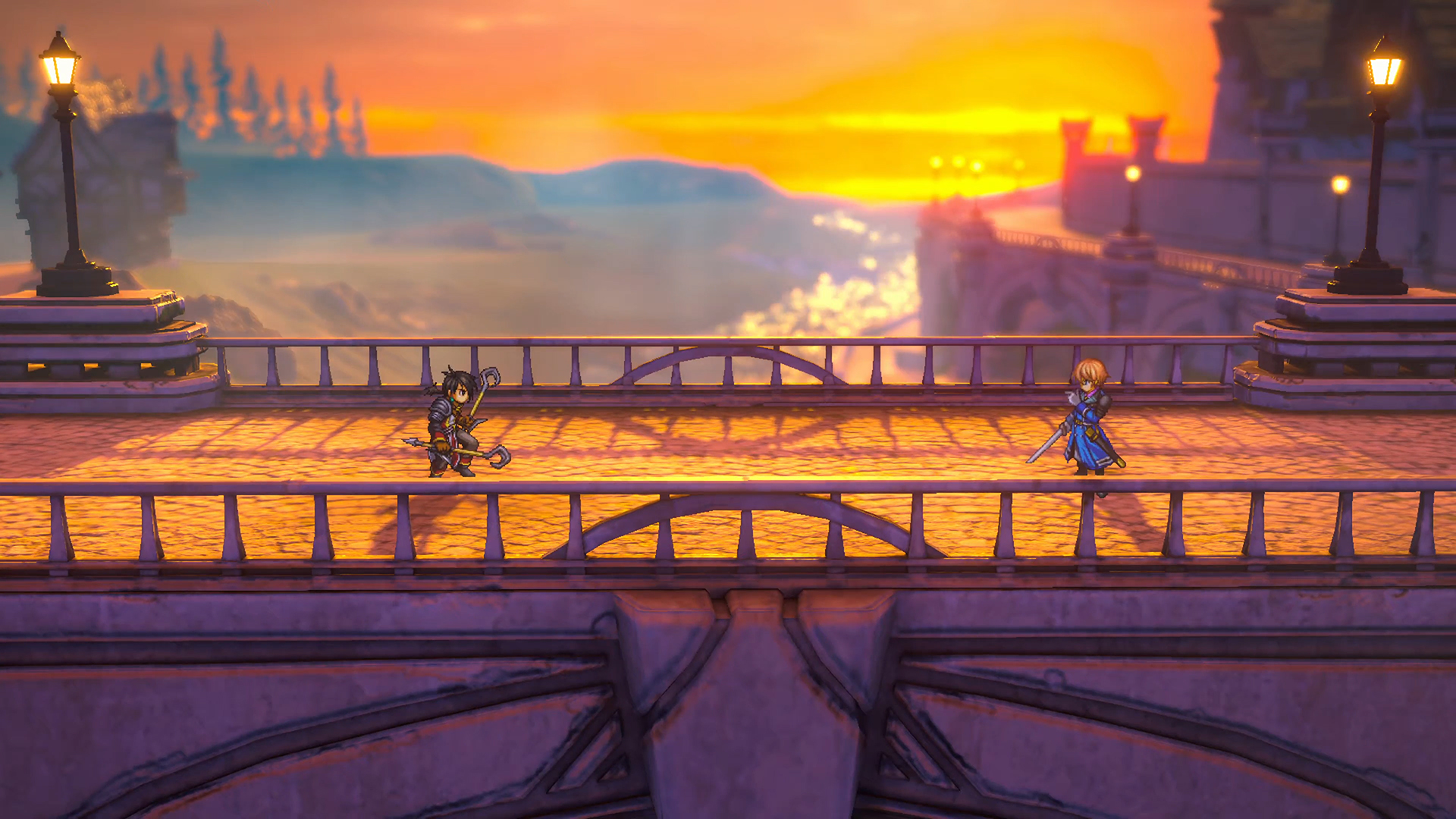
The story of Eiyuden Chronicle: Hundred Heroes revolves around three main heroes: Nowa, Seign, and Marisa. For the majority of the game, you’ll play as Nowa, a fighter from a frontier village who joins the Watch, a group of mixed-style fighters that work for the League of Nations (not that one). Seign, the second-born son to House Kesling who fights for the Galdean Empire, works with Nowa and the other members of the Watch in a joint mission. Their relationship as comrades grows, but the political situation between the two powers causes a rift in their friendship. The third core hero, Marisa, is a young warrior from the Guardians, which protects the forest from harm. As you play, you’ll use all three characters in various ways to advance the story, exploring dungeons, labyrinths, and more, and witness the power struggle occurring in their world.
The Galdean Empire wants power, and seeks to obtain it through the use of magical objects called “rune-lenses”. After finding a rare lens called the “primal lens”, the Empire looks to gain more power and overtake other countries, pressuring them to either submit or go to war. With this, a resistance army emerges, and you’ll be the one running it.
The storyline is about power struggles between nations and you are the third party interfering. This will sound familiar to Suikoden players, and the plot twists and storyline won’t surprise a lot of people. Still, it’s a fun tale to experience.
Time to Build!
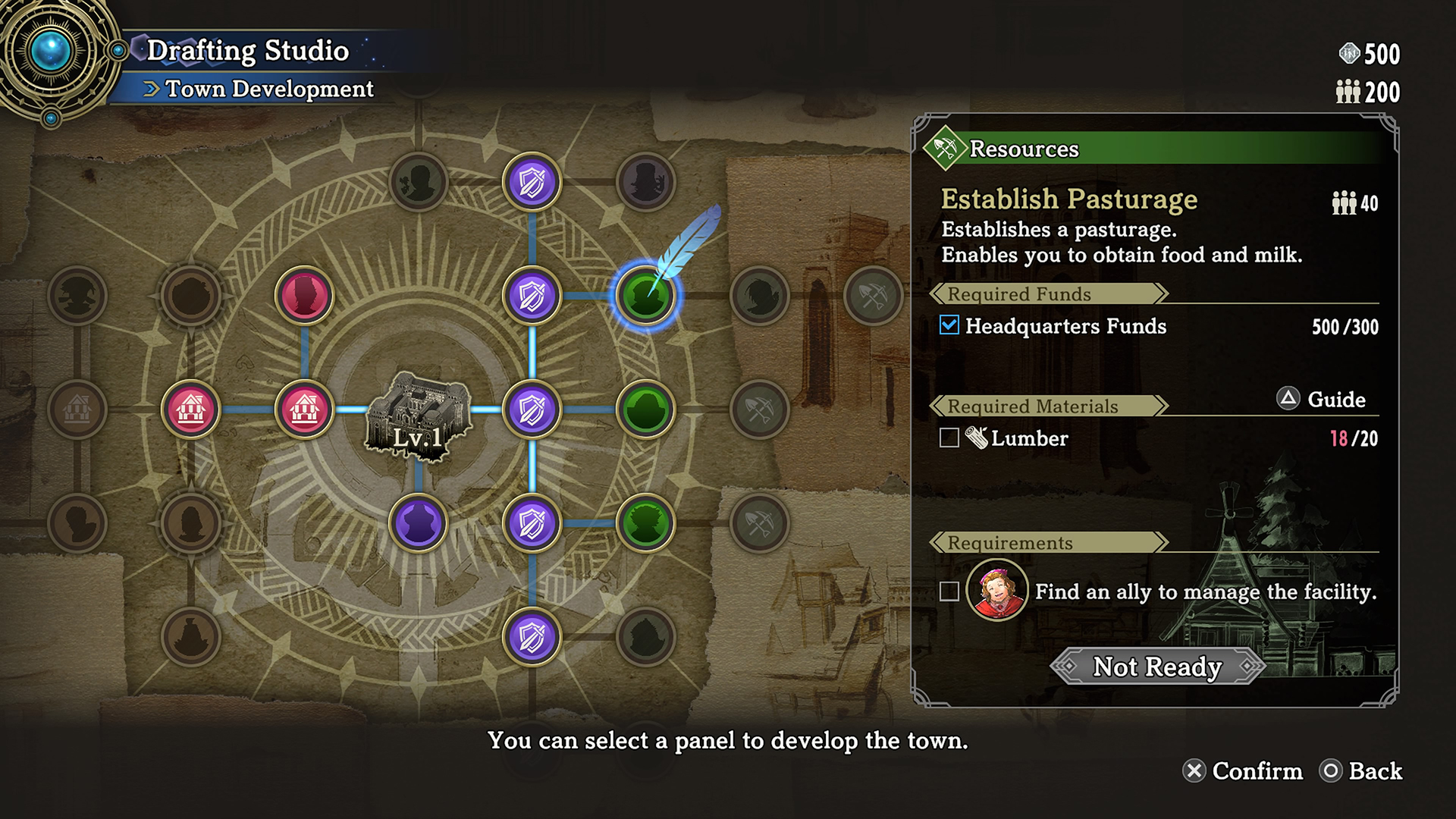
Running an army requires space and people. Luckily for you, you happen to come across a ruined kingdom that becomes your homebase. However, you’ll need to rebuild and gather allies before taking on enemy forces. True to the name Hundred Heroes, you’ll be tasked with recruiting allies to join your resistance army. If you’ve played the Suikoden series, you know where this is going. Recruiting members will open specific areas and abilities such as a card game, mining for materials, a bathhouse, shops, teleportation and more. It’s one of the funnest things to do in Suikoden, and it’s great to see it come back in Eiyuden Chronicle: Hundred Heroes.
In the Drafting Studio, there’s a map laid out with colored spheres and branches from one to the other, just like a skill tree you see in many RPGs. Each represents what can be created and upgraded in your town. Each spot is a blueprint that gives a set of requirements. Unlike Suikoden, you need to do more than just recruit someone. For example, you’ll need funds (a separate currency than your shopping money), volunteers (citizens of the kingdom), and materials (lumber, stone, etc.). It adds more gameplay for replay value. Building your kingdom and recruiting will also help your army in times of war. It’s an additional reason to explore and return to dungeons and labyrinths as resources respawn after a short amount of time.
Battle Cry
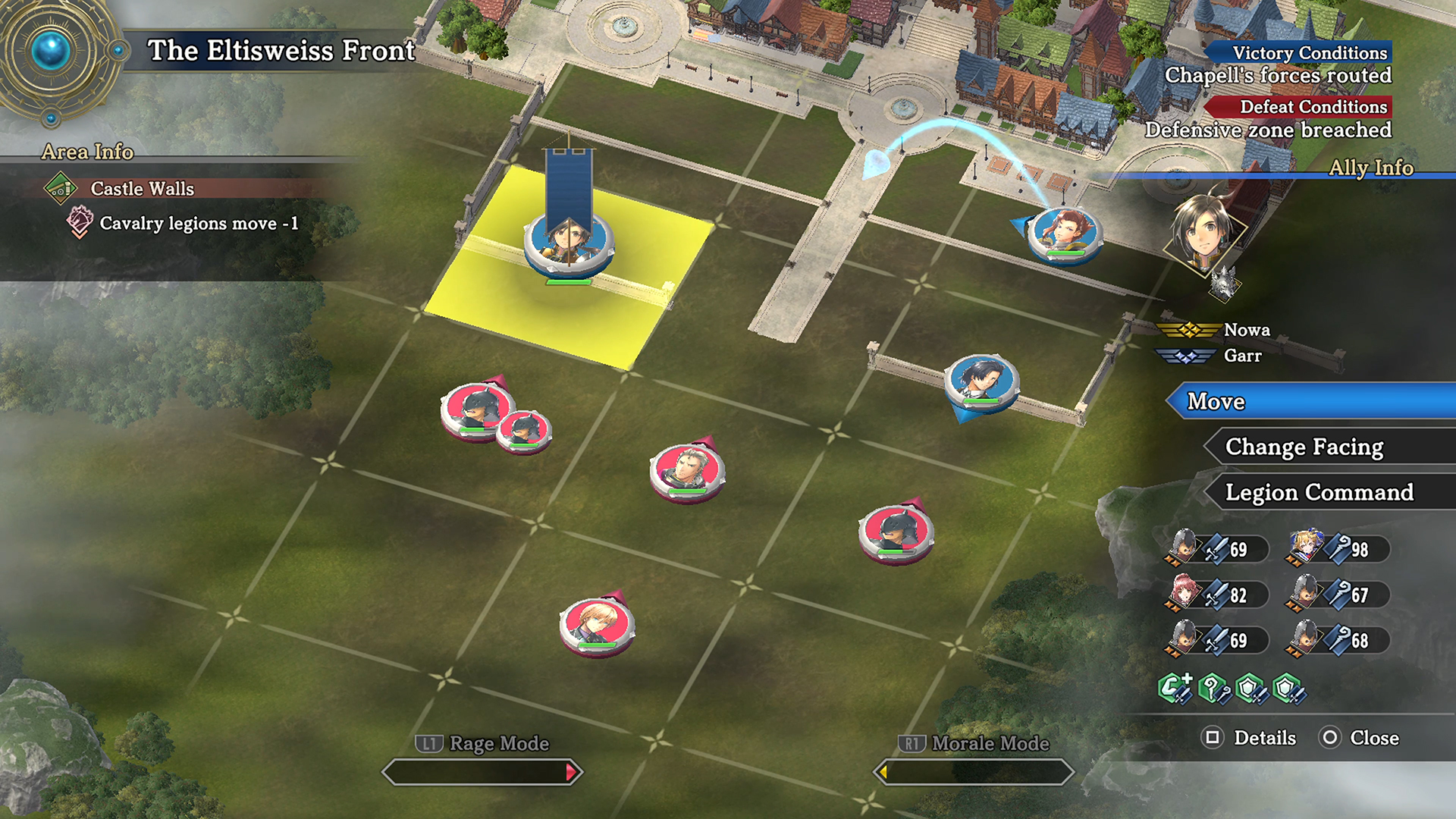
War Battles are like playing a game of checkers. You can move your army unit to the next square anywhere around you, and you can have multiple units per square. Enemies can do the same, but you won’t know what they’ll do until after you place your commands in. Each battle has a set condition such as if a certain unit is destroyed or if the enemy breaches your base. If this happens, you lose.
Each commander controls a unit and can use skills to enhance their unit, for example, increasing army strength. Be careful not to waste them when not necessary as there’s a cap. Your army strength will rely on how your army is doing in terms of your recruiting and building your town. The more you recruit, build and level up your town, the chances of fending off enemies is better. However, the game adjusts enemy units to where things can take a turn for the worse if you go too rogue. So plan accordingly and play your pieces smartly, and you’ll be just fine.
There are also two gauges to consider: Rage and Morale. When either of these gauges are filled, you can initiate the corresponding effect. Rage fills when soldiers go down on your end, and initiating it raises your army strength. Morale will prevent enemies escaping so the battle can end quicker. You won’t be able to use these for awhile in the game as the War Battles fought will end quicker than expected due to the game’s story. It’s not a complicated mechanic to learn, but it’s certainly to your advantage if you can recruit in between major story scenes.
Turn-Based Battling
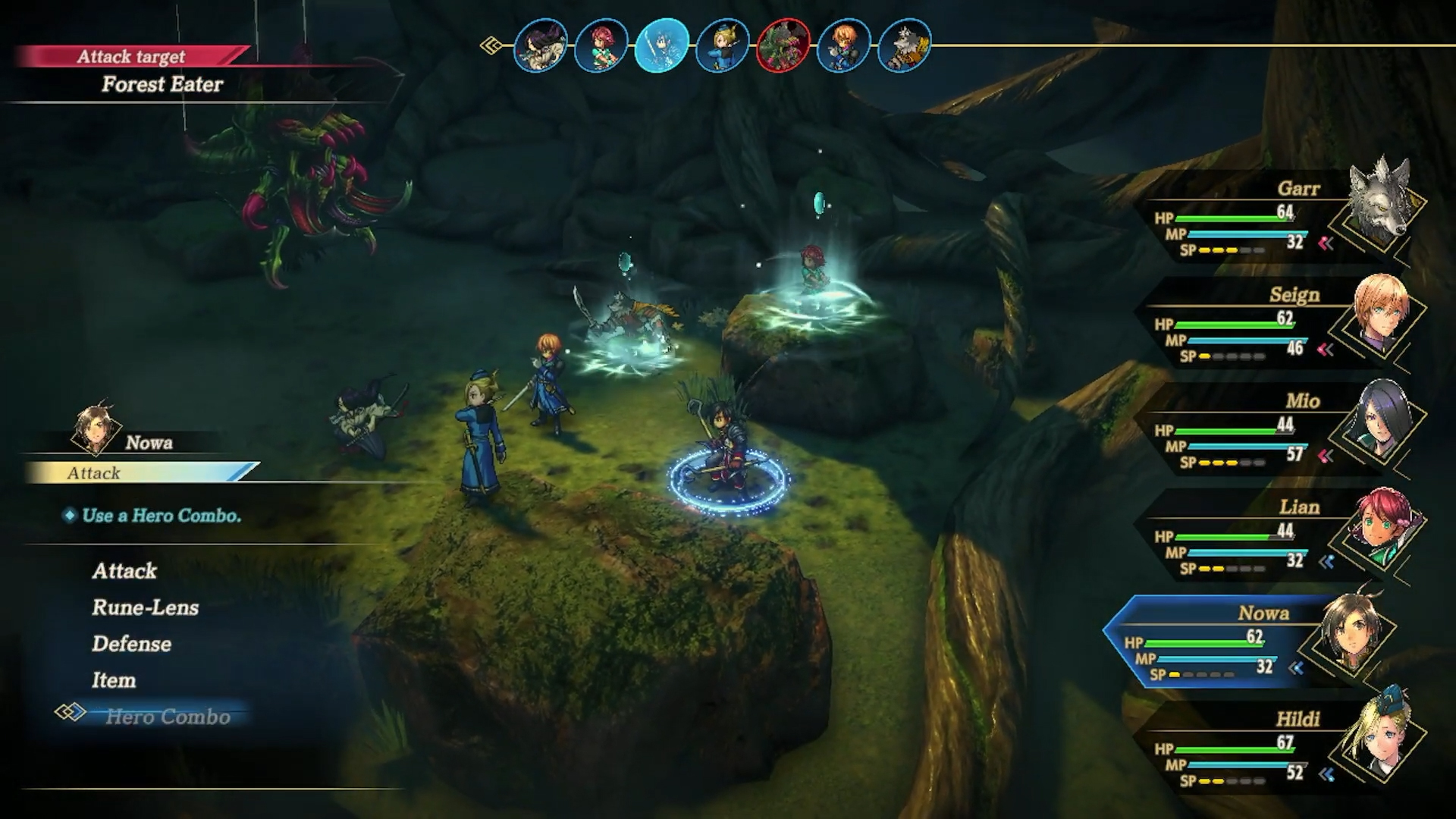
Not all characters you recruit are fighters. Some can come with you as a support member that can give you an extra boost in skills on or off the battlefield. For example, if you bring the innkeeper as a support member, you are allowed to swap characters at any save point. These spots aren’t counted toward your team of six fighters. In battle, you’ll have two rows to place six fighters. Your back set is ideal for those with less defense as they are less likely to be attacked compared to the front lines.
Suikoden veterans will recognize the term “rune” as the word used in the series to denote special abilities tied to characters. This is also true for Eiyuden Chronicle: Hundred Heroes, but it’s more flexible here. Instead of a character tied to a specific power like dark magic, the game offers a skill tree where they can equip various types of skills. For example, Nowa can equip various weapon skill attacks in one slot and and any elemental attack in the other. Some skills use skill points (SP) or magic points (MP). Changing rune-lenses can only be done at specific shops, and you’ll need to plan before venturing forth as you won’t be able to change them freely.
In battle, SP generates every turn and resets after every battle, so you won’t be able to save your generated SP points for the next one. If you enjoy tag team moves, Eiyuden Chronicle: Hundred Heroes has them. These special combo moves are learned through playing, and utilizing them can cause extra damage to opposing enemies or even more. You’ll have to keep in mind the amount of SP available for each fighter before using these moves. These combo moves come in very handy for tough situations and boss fights, so you should have at least one set of characters who can perform them.

In some boss battles, the field itself can become a tool for victory. For example, you can have a character hide behind rubble to avoid enemy attacks for a turn. In another instance, you can use an object that will then attack an enemy for more damage or stun them. It adds some additional layers for strategy, but these situations don’t come up much.
You can also use the “auto” command to let your fighters do the thinking and work. It’s a time saver, and the commands for auto can be adjusted in the game’s settings. For example, you can set a command to use no MP and use limited SP. While this saves time for getting through random battles, the game could have implemented a “fast-forward” option to speed up animations. It’s been used in many games like the Disgaea series and the re-released Final Fantasy games on modern consoles. Personally, this speed option should be available for all turn-based games.
Random battles don’t feel overwhelming the majority of the time. There are moments where they happen frequently, but that’s balanced out with breaks from them. There’s an option to flee, but it fails most of the time. Replenishing health ponts (HP) and SP require items as save points don’t automatically regenerate them. You can’t change party members either unless you bring the innkeeper as your support party member. However, once you acquire your teleportation fighter, you can freely teleport to areas you have already visited. You cannot teleport if you are in a dungeon or labyrinth area, though. You are also limited to the amount of items stored in your pockets, but you can upgrade your pocket space. You’ll come across items while exploring dungeon and labyrinth areas, so you’ll want to plan accordingly, weighing what to bring while also leaving enough space available for future treasure.
More Things to Do
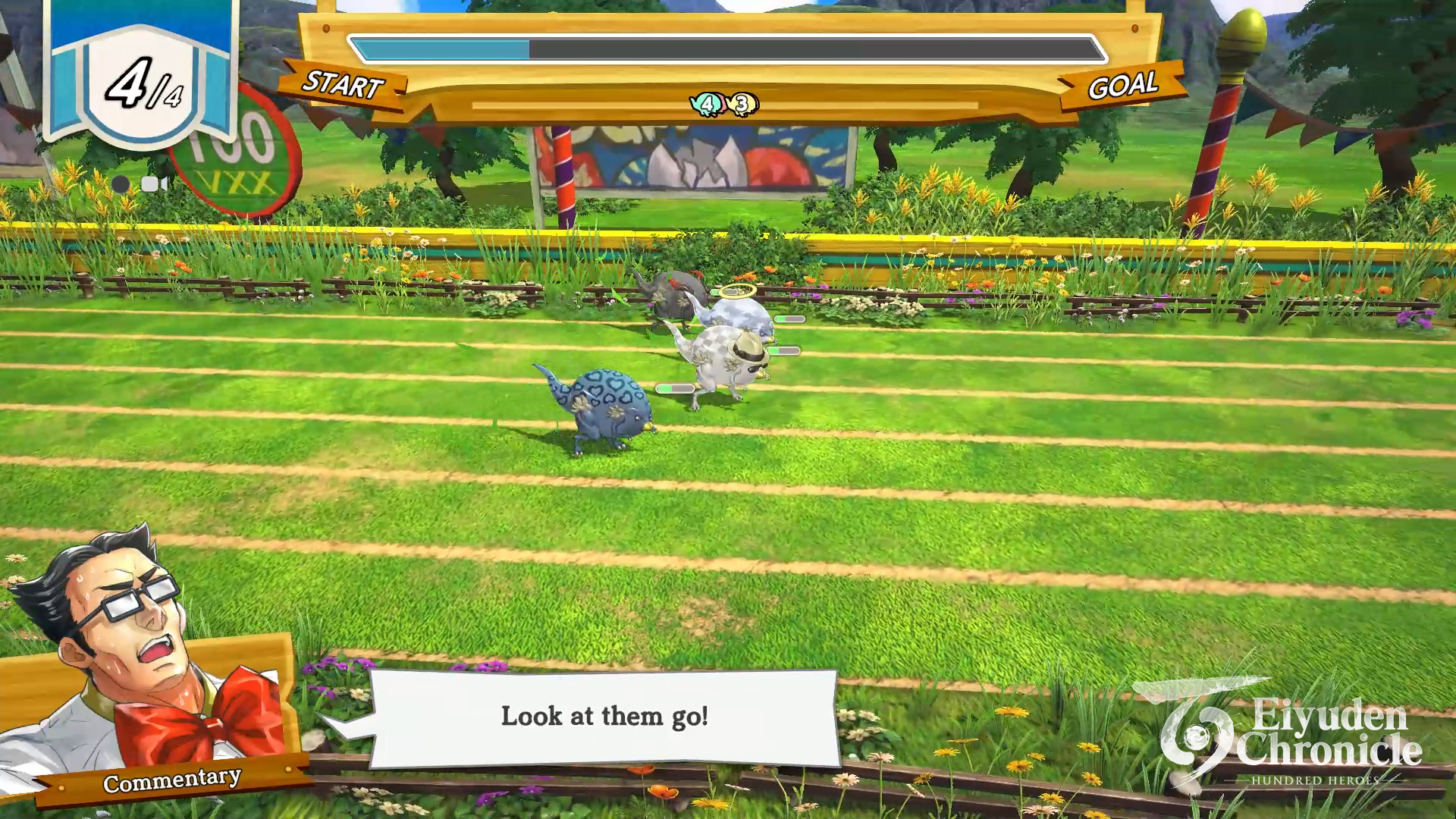
If town building, exploring dungeons, and recruiting wasn’t enough, the game offers more in-between activities. One of those activities is fishing. Like many RPGs, you can go to the relevant spots across the map to get fish for resources. The actual fishing mechanics are pretty basic compared to other games, though. Push a button to begin fishing. Once a fish comes up, an exclamation mark appears. Push the button again to haul in the fish. Different areas have different types of fish, so you’ll have to explore to find some rare ones. It works, but it’s too bad there aren’t any more mechanics built in to make it more exciting.
Another activity is a card game that resembles “War”. To sum it up, it’s based on points and card colors you and your opponent place. For example, if you place three cards with nine points each, you have 27. However, you can earn extra points based on the cards you play. The game is simple enough to learn and requires some skill to become dangerous with it. It’s fun and quick and much more entertaining than fishing. To unlock this mini game, you’ll have to beat the card player first in order to recruit them and then build a spot to play freely.
There are many other activities such as shi’arcraft racing, cooking challenges, and beigoma battles. However, the difficulty feels all over the place in games like shi’arcraft racing and beigoma. There are times you think you have figured out the mechanics and next you’re back where you started. It’s great that the game offers a lot of activities to keep you busy but expect some frustration.
Lights, Camera, Action
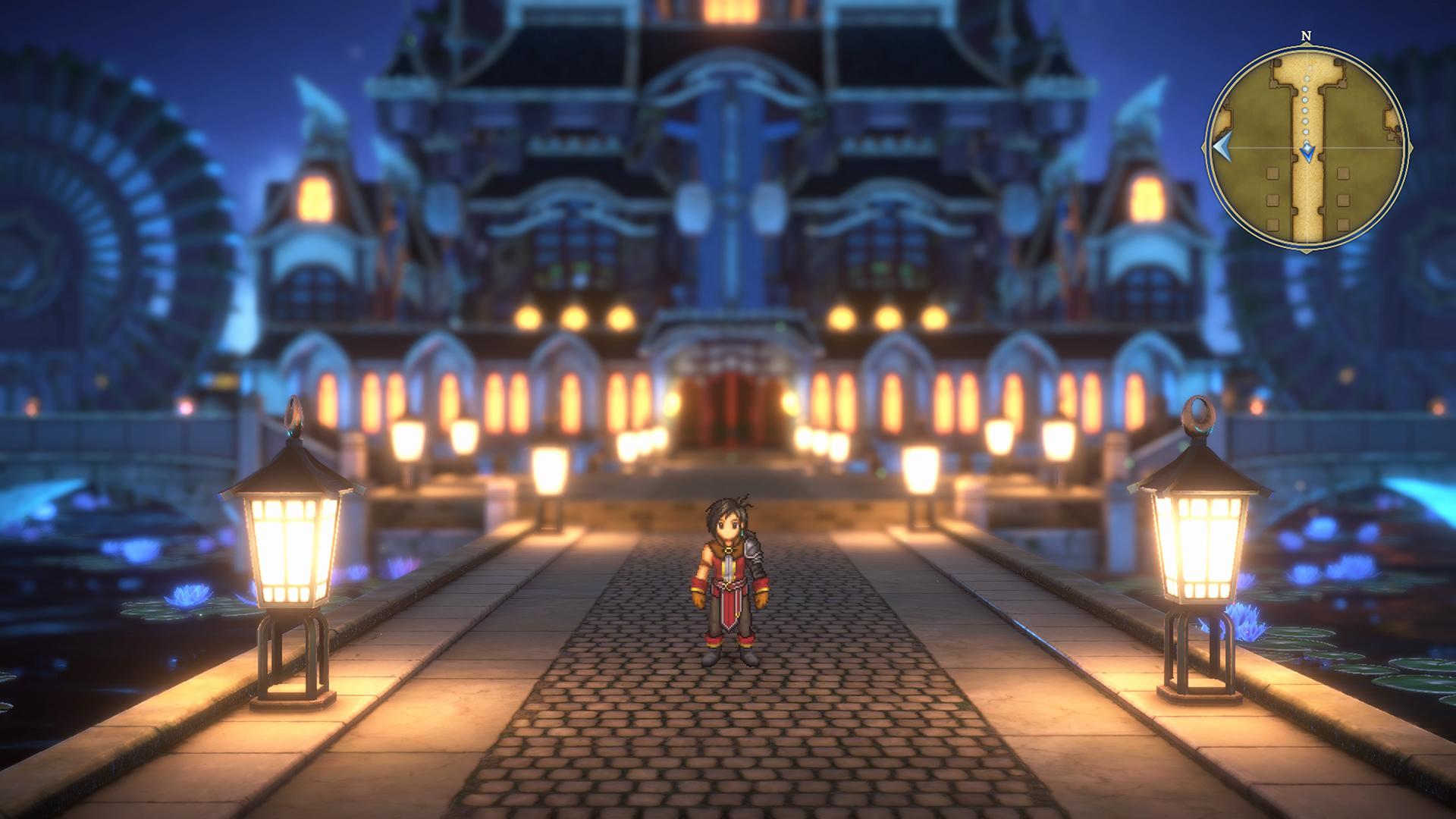
Eiyuden Chronicle: Hundred Heroes plays in a 2.5D world, using 3D environments with 2D sprites and blending them together beautifully. The game also adds a blur effect in the background to create a depth of field, similar to games like Octopath Traveler. However, the blur feels excessive and could stand to be toned down when exploring dungeons and labyrinths that require you to see further back. After playing the beta version, the final product feels much better in terms of visual quality and framerate when playing on the PlayStation 5 console.
The camera is less than ideal. When exploring towns and overworld maps, the camera stays focused on the main character as expected. In battle, it’s a whole different story. After inputting commands for your character, the camera tries to be dynamic and follows fighters that are attacking enemies. This can result in it moving around way too much. Additionally, while your fighters and enemies are attacking right after another, the camera seems to be fixated on specific areas and doesn’t let the player see what is happening with their other fighters. Who got attacked? Did they perish? You can’t tell until everyone’s turn is done. Having the camera zoom out and letting the battle unfold while zooming in on specific scenes like tag team or powerful SP moves would make more sense.
The game does encounter a few bugs. For example, recruiting Lam into your party becomes impossible if you talk to her too early. Shadows and reflections have some visual issues, moreso noticeable while exploring the overworld. The development team is aware of the issues and sending out patches. Any issues found can be submitted to the development team through this form.
The game’s soundtrack is outstanding. The opening theme is symphonic and uplifting, and the battle theme during random battles is upbeat and doesn’t get dull. Boss battles feel menacing and have some urgency. Meanwhile, overworld exploration feels laid back and relaxing. Overall, it is a stellar addition to the game and is well worth listening to when not playing.
Each main hero is recruitable and many other characters in the game have voice actors for their lines. It’s a great treat to make the game feel like an improved classic RPG. Though there’s quite a number of dialogues that are a bit awkward, it’s mostly pleasant to the ears to not have to read everything.
Controls are straightforward and not an issue. However, the game offers rumble features but players will find a lack of that while playing. Regarding the PlayStation 5’s DualSense controller, it’s not being taken advantage of either.
The Final Battle
Eiyuden Chronicle: Hundred Heroes is what classic RPG fans and especially Suikoden veterans are looking for. It has the gameplay, the soundtrack, and everything in between. It’s like reuniting with a long lost comrade and picking up where you left off, having a blast all over again. Welcome back, old friend, we missed you.
A PlayStation 5 review code provided for this review and gameplay footage.



